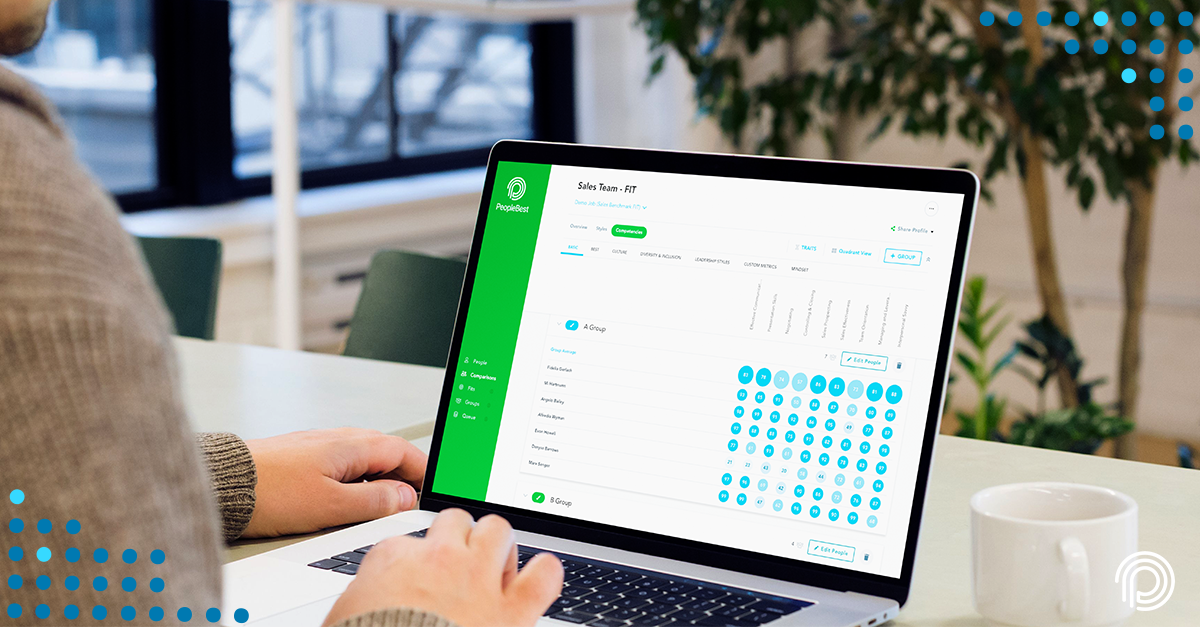Leveraging Diversity of Individuals and Where They Work
PeopleBest offers an efficient and clear way to measure capabilities by providing insights into individuals’ competency strengths, style preferences and vulnerabilities. It contrasts the individual view to that of other team members. It also provides a ‘coaching map’ for team leaders to unify efforts and challenge individuals to become the best versions of themselves.
People determine the performance capacity of an organization. Securing and retaining top talent comes with a set of trade-offs, like hiring someone in a different time zone who will need to work remotely or offering a flexible schedule to a highly qualified professional who needs work-life balance accommodations. Leaders are making adjustments to traditional workplace realities to prioritize the best “people decisions.”
In-person and remote employees require more flexibility, and these days, they can find it, making the war for talent formidable. How does an organization face this changing reality? This weighty matter falls on the shoulders of leadership. Business leaders must build their teams, find ways to encourage collaboration and engagement, and build trusting relationships among team members. And all the while, they must manage a staff who may seldom step foot in the office.
PeopleBest understands this tension. We’ve brought the best of psychology and technology to help you navigate tough people decisions like these ones. We provide a FIT score related to someone’s “Work from Home” ability, but we also take it one step further in providing a blueprint to assess or help them. Our STYLES profile provides the simplicity to understand each person in an easy-access profile.
We understand that priority #1 is to make sure we truly and accurately understand what makes a person exactly who they are. This takes the guesswork out of reviewing a potential new hire or existing employee, aiding leaders in making critical “people decisions.”
PeopleBest not only measures the fundamentals of the best FIT for the job or remote work ability but provides insight into how easily they can adapt to being productive when geographically dispersed from other team members.
We employ a proprietary methodology that helps leaders identify FIT for the job by revealing how closely matched they are to critical role-based competencies. The results also weigh other components such as individual workstyle, preferences in working with others and engagement and passion.
The most frequent question we get is, “how can I know the things I can’t learn from a resume or an interview”? Such as, will they work hard, meet deadlines with quality work, will they be a positive influence on the team and will they feel a part of the team being two time zones away? If you are leading geographically dispersed teams and need answers to these questions in building the absolute best results in your people and performance, then our solutions are for you!
Tech Specs:
Individuals respond to a series of online behavioral preference statements. Results measure participants’ strengths in competency areas essential to the job. The methodology measures workstyle, interpersonal, engagement and self concept. These elements create important insights on how to improve productivity by revealing strengths and potential landmines. Beyond that, the STYLES profile reveals how well individuals work with others and the energy, fire and passion they have for work.
Content Summary:
Do you lead a team that is never in the same place at the same time? The gaps in performance, collaboration or motivation might seem obvious to you. Understanding the “why” behind the observable behavior will streamline your abilities to move the needle. PeobleBest’s STYLES profile provides a “coaching map,” providing insights needed to optimize effort, relationships and output of each team member no matter where they work. Successfully managing a remote, hybrid or in-office team is made easier with a dynamic intelligence that minimizes guesswork and increases productivity and engagement. Reach out to PeopleBest today and get started, [email protected].











